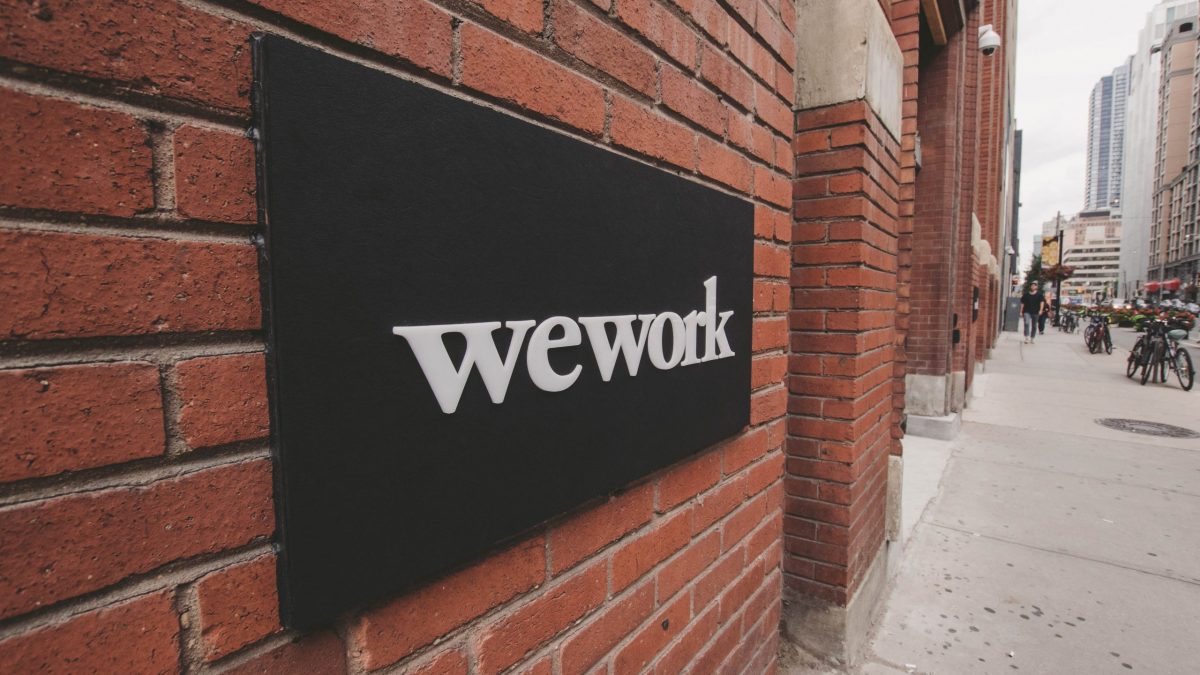
Interview with Harry Clark, future trainee at Baker McKenzie
November 13, 2019
Clear the Lobby: What laws are MPs voting on this week (w/c 18 November)?
November 17, 2019Article by Mustaqim Mohammad Iqbal and Katerina Mrhacova
The Fall of WeWork: from IPO to Implosion
On the 14th August 2019, WeWork filed for its initial public offering (IPO), with a valuation at the time that almost touched $50 billion, according to the Financial Times. The company is a familiar name for anyone who has had a flick through the newspapers over the past few months, as the media have documented their astonishing fall from grace; once the darling unicorn company of the business world, their valuation had fallen to as low as $10 billion by the middle of September. Today, after the publication of Q3 earnings for 2019, the IPO does not seem to be within the reachable distance of the company. Bloomberg reports that the losses have doubled since last year, and despite rising revenue, the value of the company continues to sink.
After the resignation of the founder and former CEO, Adam Neumann, his temporary replacements, Artie Minson and Sebastian Gunningham, decided to delay the floatation indefinitely. With all the company’s future financing hanging on their failed IPO, analysts predicted that with alternative injections of capital, the company would run out of cash by the middle of 2020. This has led to the company’s largest shareholder, the Japanese conglomerate Softbank, rescuing the company from going under. Softbank initially held an approximately 30% stake in WeWork, but increased that stake to roughly 80%, providing $5 billion of new financing and up to $3 billion for existing shareholders.
But all of this begs three questions: Firstly, what actually is WeWork? Secondly, what went so desperately wrong for the company? And perhaps most importantly, what are the consequences for the business world moving forward?
First and foremost, WeWork was, and after Softbank’s rescue, still is, a co-working company that was once hailed as the newest rising unicorn. It is driven by a charismatic founder at its helm; the earlier mentioned Adam Neumann. In terms of what WeWork does, its business is relatively simple; the primary function of WeWork is that it is a real estate company, connecting workers and businesses with places to work. The company essentially runs by renting office space for long periods from property owners, renovating them so that they provide everything that a young business might need for office space, and then rents the space out to clients.
There have been many attempts at explaining this dramatic fall, and there are various opinions as to why the WeWork IPO failed. For example, many investors had reservations because WeWork was a loss-making company – it had been one for a long time and was predicted to continue. The company conceded that it ‘could not predict’ whether WeWork would achieve profitability ‘for the foreseeable future’. That may be attributed to the poor cost control or the aggressive expansion strategy, which is, predictably, extremely expensive in the long-term and unlikely to generate a significant return in the next few years.
Other investors had reservations about the CEO, Adam Neumann. It was reported that the CEO copyrighted the term ‘We” in his capacity and forced the company to buy it from him. Several of the properties that WeWork leases were owned by Neumann, leading to an unethical conflict of interests. For a founder who had such control over the future and culture of the company, harmed the confidence of potential investors. Consequentially, the prospects of the IPO continue to be damaged as discrepancies and uncertainties surround the company, and the company continues its operations without a CEO.
However, the fundamental reason for the collapsed IPO was that, simply put, WeWork’s business model was not sustainable for anyone to safely invest in, particularly in a year where the global economy has been muted at best. WeWork rents large office blocks and creates works space. Unfortunately, though, there are large mismatches in duration between the tenancies they hold, and the tenancies they give to their clients. WeWork rents a space for 100 years, but only lease it out to a tenant for 2 years, for example. This represents a risk, as, after those 2 years, WeWork might be faced with empty offices and outstanding rental payments. It is even more concerning when we consider that a lot of WeWork’s space is dedicated to areas that do not directly generate revenue, such as sofas, lunch spaces, and breakout rooms. While this may be desirable now, there are question marks over how in demand these spaces will be if the world enters the recession that many have predicted in 2019.
At this point, WeWork is trapped in a vicious circle where a poor financial performance and even worse governance has lead to its failed IPO, and this fiasco led to a decrease in trust of investors and damaged the reputation of the company, which is among others brings a high reputation cost.
Listing Regime: How do companies go public?
Going public is commonly opted for by companies who employ growth strategies and therefore need a pool of capital to fund their operations. Despite this being one of the most apparent scenarios, and also the case of WeWork which has now set up its offices in more than 600 locations, it is not the only one. Generally speaking, the onerous, lengthy and extremely costly process of going public can be split up into two main parts. The first one is an application to the Financial Conduct Authority (in the UK) and jointly Securities and Exchange Commission, and the Financial Industry Regulatory Authority (in the USA) for admission of a company’s securities. This first part, which will be discussed in detail below, requires the company to carry out months-long preparation involving auditors, banks and lawyers for the application itself. The final deliverable is the approval of the authority alongside a prospectus for prospective investors. Secondly, the company needs to apply to a recognised investment exchange. In short, the decision of the market needs to be made. It is vital to know that this decision is not only affected by the location of the stock exchange. Two of the most popular markets, both based in New York, are NASDAQ and NYSE. Yet, the differences are paramount, and the decision to enter the less liquid market cost Facebook’s IPO the success it had the potential to reach. The exchange markets set their own criteria for admission to trading to its markets via trading rules, due to their scope and complexity; these will not be discussed any further.
In practical terms, the collaboration with other stakeholders is key, and it is representative of the full transparency that the firm is about to face as a publicly held company. One of the initial, and also most consuming tasks, is the legal review, which includes for example, due diligence to ensure full compliance. Another stakeholder that is involved in the process form the very beginning is audit bodies that are responsible for creating and verifying financial documents of the company, in order to give reliable information to the investors. Other parties involved at this stage include public relations advisers, bankers and most importantly, the management of the company. All the aforementioned actors work on drafting reports that accurately reflect the company and its restructuring. Going public requires the organisational structure to comply with the given regulation, which means that many companies restructure on a continuous basis, to minimise the disruption to the business, in preparation for an IPO.
The Prospectus
Once all documents are collated, and audited reports are available, a Prospectus is drafted. One can think of a Prospectus as the primary marketing tool to attract investors. There is a vast amount of legislation regarding the contents, layout and the means of publishing a Prospectus. This document has to be approved before it is published and it is usually a process of improving, changing and adapting the Prospectus, according to the comments of the governmental body, which is entrusted with the responsibility of overseeing such documents. In the UK, this falls within the authority of the rule of UK Listing Authority, while in the US it is the Securities and Exchange Commission. Generally speaking, the Prospectus should include information about the following matters: stock classes, the rights attached, indebtedness statement, dividend incentives, risk analysis, market data, the future sale of stocks arrangements and an attachment of detailed audited consolidated financial statements.
WeWork actually managed to submit its Prospectus, and it can be publicly found. A document which should be drafted to convey trust, transparency and evidence of future prosperity of the company, contains some rather informal aspects and controversial provisions, suited to the relaxed culture of WeWork. Actually, the laid-back culture itself has a section dedicated to it the Prospectus. Further, WeWork firmly stated that it is not planning to pay any dividends in the foreseeable future, as it wants to continue its aggressive internationalisation strategy and follow the quick expansion. This, in combination with the financial statements suggesting a loss of control over overheads and costs, does not leave the investors with a good impression.
Publishing and Floating
If the contents of the Prospectus are approved, the company usually engages multiple streams to share it with the public, including the prospective investors. The responsible body also publishes such Prospectuses on an ‘official list’. Usually, there is a range from hard copies, to an electronic form of the publication on the website of the company as well as the website of the regulated market, where it is going to float.
The stocks of the company are then offered on a stipulated date for an ‘offering price’, which is usually inferred from the value of the company and the number of shares it authorises, also called a fixed price offer. The demand for the stock then drives the stock prices up or down, and such price changes are closely monitored for the day of the IPO. When the stock exchange closes, the shares generate ‘money left on the table’ if the price increases and stays above the offer price or the IPO may lead to a disappointment. The stocks will then proceed onto being traded on a daily bases within the chosen stock exchange, and the company has to comply with extensive rules of being a company limited by shares.
Conclusion
The rules mentioned above are intended to serve as a brief introduction to the mechanics of an IPO, the laws, codes of conduct and other guidance on the topic are extensive. The legislation regulating financial securities trading continue to be stricter due to the fear of financial crisis. The legal challenge of an IPO is going to be followed by ever-demanding rules, and this has to be kept in mind by companies considering going public as well.
Being public offers many benefits, but it also includes a clear trade-off of cost and scrutiny, such intricacies may not be the right answer for every company. Maybe we could argue that the laissez-faire management and lack of security of WeWork make the company as a whole unsuitable for being publicly traded.
Some have predicted that WeWork can be seen as a damning glimpse into the bleak IPO landscape that will unfold over the next few years. However, this would be a crude assessment. What the WeWork debacle has shown is not that investors are slowing down, as a result of a slowing economy, but rather that investors are merely growing more cautious, and make more mature decisions when injecting capital. They had learned from recent examples and were not ready to be fooled again; in this year alone, Uber and Lyft, both loss-making ride-sharing groups, saw a frosty reception from investors, as showing a clear, realistic and believable pass to profitability is seen as increasingly essential. No longer are investors ready to be trapped into investments that make continuous year-on-year losses. Thus, while the WeWork saga is unlikely to impact the number of IPOs dramatically, it is likely to change the type of IPOs that we will see – gone are the days of the maverick, loss-making unicorn, driven by unsustainably rapid growth.





